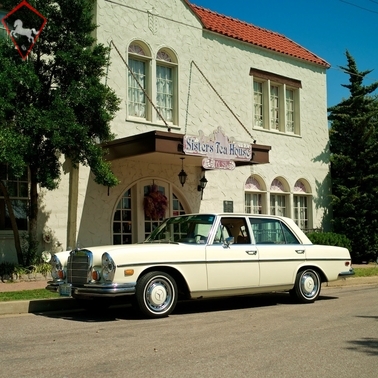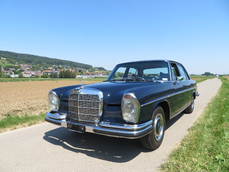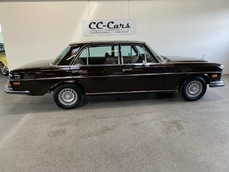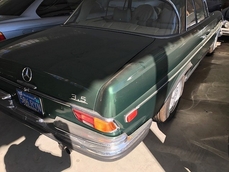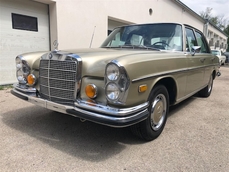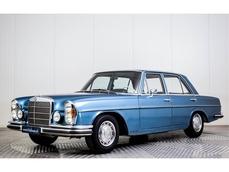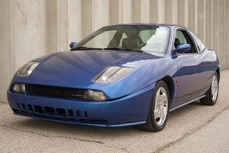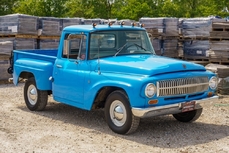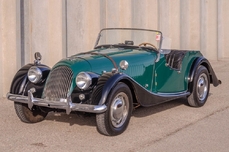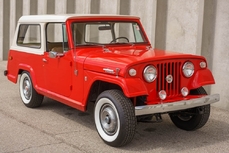Mercedes-Benz 280S/SE/SEL w108 V8 1972
General description :
1972 Mercedes-Benz 280SEL 4.5
Believedto be one of the nicest original condition survivor 280 SEL 4.5 inexistence
Unrestored car that is in overall stunning condition!
One-owner car that has resided here in St. Louis Missouri since new
73,000 actual miles that is supported by intensive service records with no gaps and personal owners log
Extremlymeticulousowner who was a Captain pilot in the 110th Tactical Fighter Squadron and Ozark Airlinesprivately
Sold at 4pm on August 23, 1972 at Boulevard Motors in St. Louis Missouri
Religiously dealer serviced at Boulevard Motors and Plaza Mercedes Benz, all receipts are included and stampedmaintenancebook
One of 6,302 280SEL 4.5 models made in 1972
Finished in its factory correct Light Ivory exterior (code 670) with optional Cognac interior (code 250)
Numbers matching 230HP 4.5L SOHC V-8 engine with Bosch D-Jetronic fuel injection #012388
Three-speed automatic transmission with torque converter and 3.23 rear end
Air-conditioning, central locking, power steering, power four-wheel disc brakes, power windows, four-way power front seats and central locking,tinted glass, rear window defroster
Optioned with Becker Grand Prix AM/FM stereo, power sliding sunroof, cognac leather and white wall tires
Tons of documentation, including original data card, original owners manual, US Directory of M-B Dealers, a copy of the 1970 M-B model category, original Becker auto radio guide, original service warranty booklet, large stack of dealer maintenance and service receipts and more
Classic and formal Mercedes-Benz styling combined with power and handling to keep up with modern traffic is what youll find in this 1972 Mercedes-Benz 280SEL 4.5 at MotoeXotica Classic Cars. This example was made in March 1972 in Stuttgart, West Germany. It arrived in the US via the Port of Baltimore then was sold on August 23, 1972 at Boulevard Motors right here in St. Louis, Missouri and has been in the area since new by the original owner.Extremlymeticulous one owner who was a Captain pilot in the 110th Tactical Fighter Squadron and Ozark Airlinesprivately and religiously dealer serviced his beloved 280SEL only at Boulevard Motors and Plaza Mercedes Benz. This has to be one of the best unrestored survivor quality 280 SEL Sedans available in the market today! With only73,000 actual miles and one owner that is supported by the intensive service records included with no gaps and personal owners log.
Finished in Light Ivory (code 670), the cars paint and trim are in overall excellent condition and the overall appearance is striking. The cars glass panels are clear and crack-free, as are the vehicles lights. The stacked headlights still look great 45 years later and still sport the original Carello lamps. This Benz rolls on Michelin XH4 whitewall radials, sized 195/75R14 at all four corners, surrounding body-colored factory wheel covers. The cars body panels are straight and solid and the bumpers and chrome look excellent.
Under the hood is Mercedes 4.5L SOHC V-8 engine with cast-iron block and Bosch D-Jetronic fuel injection. Backing this engine is a Mercedes-Benz three-speed automatic transmission and a 3.23:1 rear end. The 4.5L engine debuted for the North American market in early 1971 to circumvent new federal emissions standards without sacrificing engine output and performance. The 4.5 had a specific ECU that provided 10 percent full throttle enrichment. Driver convenience features include air-conditioning, power steering, power four-wheel disc brakes, power windows, central locking, four-way power front seats, sunroof, tinted glass and rear window defroster.
Inside, the car is upholstered in Cognac (code 250). The SEL variants had a four-inch longer wheelbase and four more inches of rear legroom compared to 280S and 280SE models. The front leather buckets and rear leather bench seat with fold-down center armrest are in very good order, as is the matching carpet and the tan headliner. The black instrument panel is in one piece and its walnut wood trim lends an added dose of warmth. The original, two-spoke steering wheel is present and looks terrific , as do the cars inner door panels. The mirror glass and gated shifter are in good order while the center console is in very good order. Completing this interior is a Becker Grand Prix AM/FM stereo. The interior features a factory power moonroof and it functions correctly.
The W108 cars premiered at theFrankfurt Auto Showin 1965. The initial model lineup consisted of 250S, 250SE and 300SE, as well as a W109; the 300SEL. Engines for the new car were carried over from the previous generation but enlarged and refined.
The 250S was the entry-level vehicle fitted with a 2.2L straight-six cylinder engine with two dual downdraft carburetors. The 250SE featured an identical straight-six but with a six-plungerfuel injection(designatedM129) for improved performance.
Both the 300SE and 300SEL came with the 3.0L engine originally developed for the Adenauers. It had a modern six-plunger pump that adjusted automatically to accelerator pedal pressure, engine speed, atmospheric pressure, and cooling water temperature, to deliver the proper mixture depending on driving conditions. The cylinder capacity of the three-liter Mercedes engine was unchanged since1951. From 1965 to 1967, fewer than 3,000 W109s were produced. However, approximately 130,000 of the less powerful 250 S/SE models were built during the first two years of the W108s/109s existence.
Documentation includes original data card, original owners manual, US Directory of M-B Dealers, a copy of the 1970 M-B model category, original Becker auto radio guide, original service warranty booklet assorted maintenance and service receipts and much more. Be sure to see the photos for the extensive paperwork!
This car is currently located at our facility in St. Louis, Missouri. Current mileage on the odometer shows 71,537 miles and is believed to be actual supported by the extensive service receipts and owners log. It is sold as is, where is, on a clean and clear, mileage exempt title. GET OUT AND DRIVE!!!
Click here for our YouTube video!
VIN: 108068-12-012233 EIN: 117984-12-012388
http://www.motoexotica.com/inventory/listing/1972-mercedes-benz-280-sel-4-5-2/
1972 Mercedes-Benz 280S/SE/SEL w108 V8 is listed sold on ClassicDigest in Fenton (St. Louis) by for Not priced.
Car Facts
Car type : Car Make : Mercedes-Benz Model : 280S/SE/SEL w108 Model Version : V8 Engine size : 0.0 Model Year : 1972 Sub type : Sedan Location : Fenton (St. Louis)
Sold
Seller Information
Sold
People who viewed this Mercedes-Benz 280S/SE/SEL w108 also viewed similar Mercedes-Benz listed at ClassicDigest
Other cars listed for sale by this dealer
About Mercedes-Benz
In the annals of automotive history, the journey of Mercedes-Benz is a tale that unfolds with the ingenuity of its founding pioneers. In the year 1886, Karl Benz crafted the Benz Patent Motorwagen, a creation that would go down in history as the world's inaugural automobile. Unbeknownst to him, this moment marked the genesis of what would evolve into the most illustrious premium car manufacturer globally. The financial underpinning of this pioneering venture, interestingly, was provided by Karl Benz's wife, Bertha Benz, demonstrating a remarkable partnership that would set the tone for Mercedes-Benz's legacy.A parallel narrative emerged not far away, as Daimler-Motoren-Gesellschaft, founded by Gottlieb Daimler and Wilhelm Maybach, entered the scene. In 1901, they unveiled their automobile under the now-famous moniker "Mercedes," meaning "godsend" in Spanish. This name was bestowed upon the car at the behest of Emil Jellinek's daughter, the distributor for Daimler-Motoren-Gesellschaft. The wheels of innovation were set in motion.
Fast forward to 1926, a pivotal year that witnessed the merger of Daimler with Benz & Cie., culminating in the birth of Daimler-Benz. The amalgamation saw the adoption of "Mercedes-Benz" as the distinguished trademark for their automobiles, fusing the legacies of two visionary entities into one.
Contrary to perceptions of conservatism, the trajectory of Daimler-Benz unfolds as a chronicle of industry firsts. From the introduction of the honeycomb radiator to the float carburetor, and the pioneering implementation of four-wheel brakes in 1924, Daimler-Benz consistently pushed the boundaries of automotive innovation. The diesel-powered Mercedes-Benz 260 D in 1936 marked the inception of diesel engines in passenger cars. The iconic Mercedes-Benz 300SL Gullwing made history as the first car with direct fuel injection, albeit the Gutbrod's tiny 2-stroke engine can claim precedence.
Safety innovations became a hallmark, with Béla Barényi's patented safety cell design in the "Ponton"-models in 1951, featuring front and rear crumple zones. The W116 450SEL 6.9 saw the introduction of the Anti-Lock Brake system (ABS), another pioneering safety feature. From the first production airbags and beyond, the legacy of "firsts" continued to be etched into the fabric of Daimler-Benz.
Over its centennial journey, Mercedes-Benz has not merely produced cars but has sculpted automotive icons. The SSKL, 710 SSK Trossi Roadster, 770K Grosser, 540K Spezial Roadster, 300SL Gullwing, w100 600 Pullman, w111 280SE 3.5 Flachkühler, w113 230SL Pagoda, w109 300 SEL 6.3, and w201 2.3-16 Cosworth stand testament to the brand's commitment to engineering excellence.
The roaring Silver Arrows, or "Silberpfeile," including the W 25, W 125, W154, W165, and W196, created a legacy of dominance on the racetrack. These machines were not merely cars; they were expressions of precision, speed, and an indomitable spirit that left their competitors in the dust.
As Mercedes-Benz marches into the future, it does so not just as an automaker but as a custodian of a legacy, a torchbearer of innovation, and a beacon of automotive excellence. The road ahead is sure to witness the continued fusion of cutting-edge technology, timeless design, and an unwavering commitment to setting new standards in the world of automobiles.
One luminary figure who left an indelible mark was Béla Barényi, often heralded as the "father of passive safety" for his pioneering work in safety engineering. His patented safety cell design, featuring front and rear crumple zones, became a hallmark of Mercedes-Benz's commitment to occupant safety, setting new standards that reverberated throughout the automotive world.
Moving through the chronicles, the collaborative genius of Wilhelm Maybach, alongside Gottlieb Daimler, laid the foundation for Daimler-Motoren-Gesellschaft. Their innovations not only birthed the first Mercedes but established a culture of relentless pursuit of technological excellence that remains integral to Mercedes-Benz's DNA.
In the post-merger era of 1926, Ferdinand Porsche emerged as a prominent figure within Mercedes-Benz. His work on the Mercedes-Benz S-Type, a supercharged race car, garnered acclaim and set the stage for a legacy that extended far beyond the marque. Porsche's impact would later extend to his eponymous company, but his influence at Mercedes-Benz during those formative years was pivotal.
As the 20th century progressed, the legendary Rudolf Uhlenhaut emerged as a key figure. Uhlenhaut, an accomplished engineer and the driving force behind the iconic Silver Arrows, played a crucial role in Mercedes-Benz's dominance in motorsports. His engineering prowess and attention to detail were instrumental in creating some of the most formidable racing cars of the era.
In the latter half of the century, figures like Bruno Sacco, the head of design at Mercedes-Benz from 1975 to 1999, left an indelible imprint on the brand's aesthetic identity. Sacco's design philosophy, characterized by clean lines and timeless elegance, shaped iconic models like the W126 S-Class and the W201 190E, solidifying Mercedes-Benz's reputation for luxury and sophistication.
The narrative would be incomplete without acknowledging the contributions of engineers like Hans Scherenberg, whose leadership in the 1970s ushered in a new era of technological innovation at Mercedes-Benz. Scherenberg's tenure saw the development of groundbreaking technologies, including the Anti-Lock Brake system (ABS) and the introduction of airbags in production cars.
